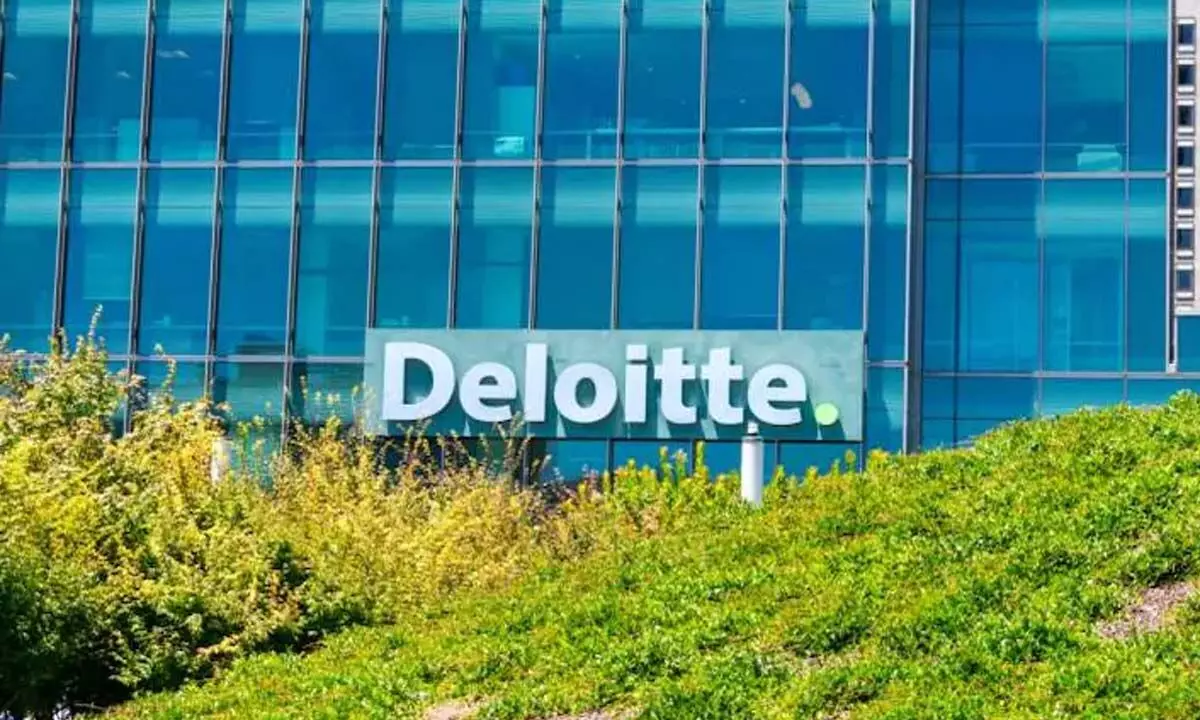Live
- New cruise season opens at NMPA!
- Sikh Community Pays Glorious Tributes to Former Prime Minister Manmohan Singh
- Launch of “Har Din Hai Smarniya” Calendar dedicated to freedom fighters
- Telangana HC extends protection to KTR in Formula E-race case
- Rains in Rajasthan cause dip in temperature, fog hampers visibility
- HC orders Delhi and Centre to enter MoU to implement Ayushman Bharat scheme
- Hon'ble Supreme Court Judge SVN Bhatti Visits Jogulamba Temple.
- Demand to Construct District Court Complex at PJP Camp in Jogulamba Gadwal District
- Gadwal MLA Bandla Krishnamohan Reddy Meets Union Minister Bandi Sanjay to Push for Key Development Projects.
- India's rural consumption rises, gap with urban areas narrows: Survey
Just In
Deloitte India Inputs deciphering the ‘Indian Economy–A Review' by the Finance Ministry


Over the past 10 years, India’s journey has been nothing less than incredible. From a status where India’s economy was considered as one of the fragile five nations in 2013
Do let us know in case of any further queries, we would be happy to facilitate the same.
Over the past 10 years, India’s journey has been nothing less than incredible. From a status where India’s economy was considered as one of the fragile five nations in 2013, India has transitioned itself into an economy which is now amongst the top five GDP nations. India has improved quite significantly in parameters such as the current account reserves, infrastructure, consolidation of expenses, tax revenues, banks and corporate balance sheets, green growth initiative, and digitisation.
By the end of the fiscal, India will have grown at a steady rate of over 7% for two years in a row when the rest of the world has struggled. And we believe the rebound is here to stay longer. It has been because India has managed to sail ahead through uncertainties while building the ship. India has brought in steady reforms with a vision of long-term growth that helped India improve its resilience that we are witnessing now.
While the review has highlighted the challenges of shifting global supply chain, a transition towards greener energy sources and the impact of digitisation on jobs, we believe this gives India an opportunity. With MNCs prioritising diversification of the supply chain, the world is now willing to see beyond China. The recognition of India as a resilient economy and its potential to serve the world in areas such as technology, manufacturing, and high-end services comes at an opportune time.
Digitisation has transformed India as out-of-the-box thinking has resulted in formalisation, higher efficiencies, and greater inclusiveness. The success of digital public infrastructure such as the UPI, account aggregators, online e-filing platforms, and FASTag --pivotal innovations serving the citizens and businesses—have improved ways of doing business, and helped benefits reach the grassroots.
India’s efforts to double down on green initiatives are visible as India installed non-fossil fuel capacity by close to 400% in the past 8.5 years. We believe the efforts will only accelerate supported by better technology and rapidly falling costs of solar and wind panels.
Spending on physical infrastructure to bring down logistics costs while increasing income and jobs is likely to bear fruits this year. The effective Capital Expenditure by the Union government has risen from 2.8 per cent of GDP in the fiscal year ending March 2014 to 4.5 per cent in 2023-24 (BE). Going forward, the government will likely recalibrate spending contingent on the revival of the private capex.
Over the past 10 years, India has diversified its export basket and moved towards higher value–added products. As a result, the proportion of engineering goods, pharmaceuticals, and electronics goods in total exports increased by 8.5%, while traditional baskets’ share fell 6.8%.
The rebound of India’s financial sector since the crisis the sector faced in 2018-19 is credible, despite the pandemic and geopolitical uncertainties. Prudent policies and continued reforms have helped the banking sector tide through the crisis. As a result, we can see banks’ improved balance sheets and falling NPAs are aiding in stronger credit growth despite rising policy rates. Strong credit has played an important role in supporting growth and keep the investment cycle strong.
The government has also made significant efforts in anchoring inflation and expectations since the pandemic. Core prices have been declining over the past few months, and the government has also ensured that inflation from food is not translated into broad-based inflation by better managing the inventory and improving the supply of key food products from farms to the table.
Higher spending on social infrastructure as has been documented in the review points to the government’s effort to build our human capabilities and improve their knowhow. Complex linkages are arising out of technological change and changing geopolitics and India will have to be prepared by better investment in its human capital where it has an advantage.

© 2024 Hyderabad Media House Limited/The Hans India. All rights reserved. Powered by hocalwire.com






